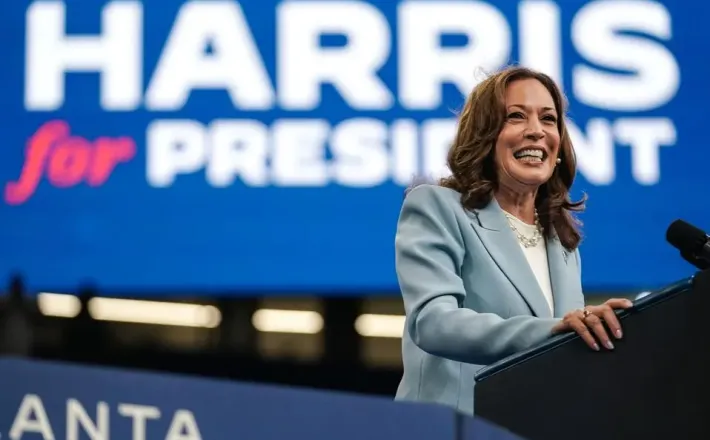Kamala Harris takes DNC stage in a political landscape changed for women since 2016
Source: Forbes
On the second night of the Democratic National Convention (DNC) of 2016, Hillary Clinton appeared via satellite as a collage of all male presidents was graphically shattered to show her live image. In that moment, she said, “I can’t believe that we just put the biggest crack in that glass ceiling yet,” referring to what she called the “highest, hardest glass ceiling” of the U.S. presidency eight years prior. When Clinton takes the DNC stage on Monday, she will do so again with the mission to see that ceiling shattered once and for all by Vice President Kamala Harris.
Understanding the gendered terrain that Harris is now navigating as just the second woman major-party nominee for president means appreciating how and why that terrain has shifted since Clinton’s history-making bid in 2016.
Since 2016, women have made record gains in officeholding. When Clinton took the stage in July 2016, women were under 20% of Congress, under 25% of state legislators, and just six of 50 governors nationwide, according to the Center for American Women and Politics at Rutgers University (CAWP). But immediately following Clinton’s defeat – and at least in part because of it – women’s political participation surged, from protest at women’s marches to record levels of women’s candidacies in the 2018 midterm elections.
Read here the full article published by Forbes on 16 August 2024.
Image by Forbes

On the second night of the Democratic National Convention (DNC) of 2016, Hillary Clinton appeared via satellite as a collage of all male presidents was graphically shattered to show her live image. In that moment, she said, “I can’t believe that we just put the biggest crack in that glass ceiling yet,” referring to what she called the “highest, hardest glass ceiling” of the U.S. presidency eight years prior. When Clinton takes the DNC stage on Monday, she will do so again with the mission to see that ceiling shattered once and for all by Vice President Kamala Harris.
Understanding the gendered terrain that Harris is now navigating as just the second woman major-party nominee for president means appreciating how and why that terrain has shifted since Clinton’s history-making bid in 2016.
Since 2016, women have made record gains in officeholding. When Clinton took the stage in July 2016, women were under 20% of Congress, under 25% of state legislators, and just six of 50 governors nationwide, according to the Center for American Women and Politics at Rutgers University (CAWP). But immediately following Clinton’s defeat – and at least in part because of it – women’s political participation surged, from protest at women’s marches to record levels of women’s candidacies in the 2018 midterm elections.
Read here the full article published by Forbes on 16 August 2024.
Image by Forbes